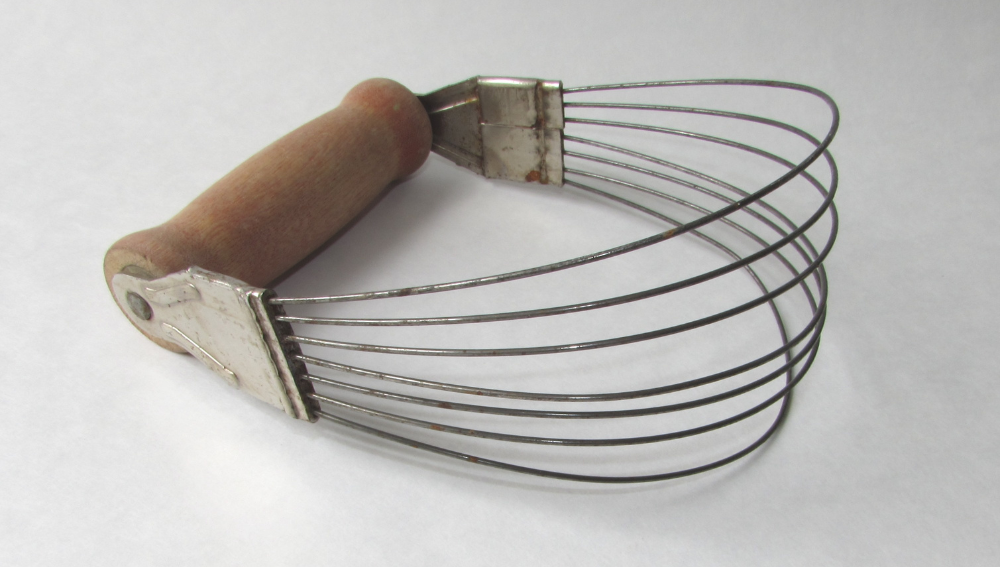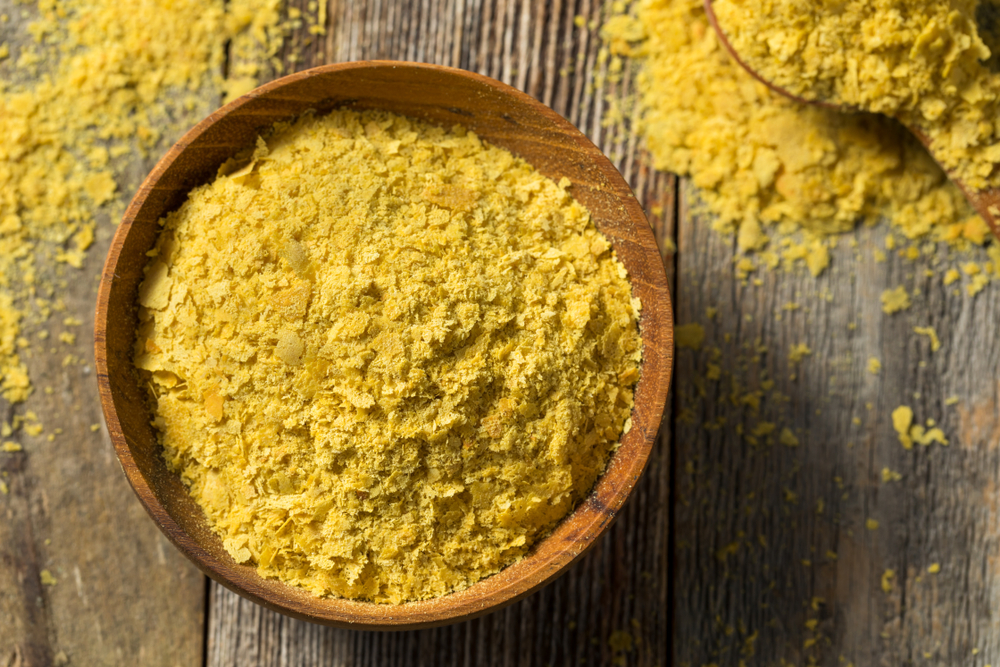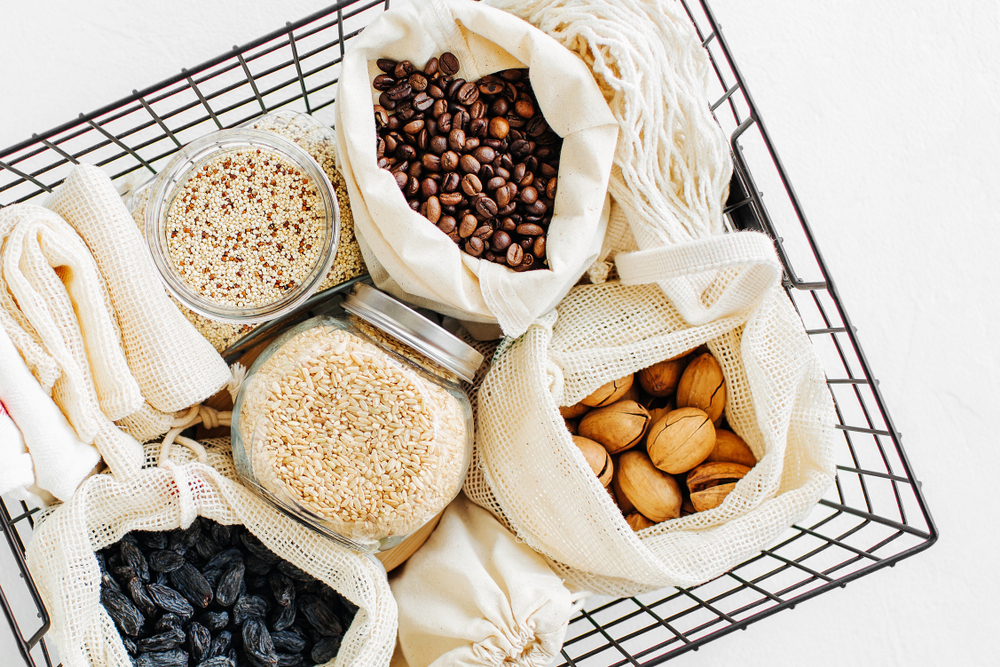Can you store celery juice? As celery juice gains popularity as a health drink, many people are wondering if it can be stored for later use.
The answer is yes, but there are some things to keep in mind when storing celery juice to ensure it stays fresh and retains its nutritional value.
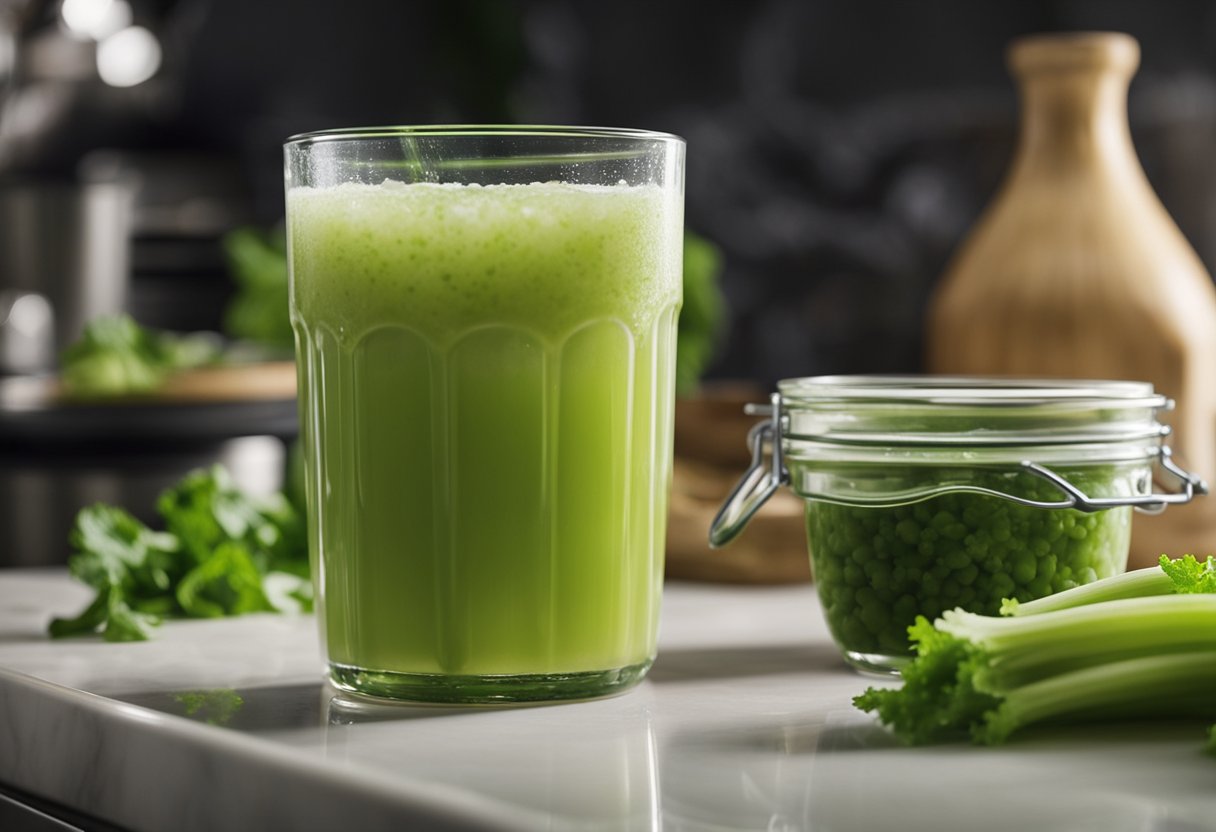
Understanding celery juice is the first step to storing it properly. Celery juice is made by extracting the juice from celery stalks using a juicer or blender.
It is a popular health drink due to its high nutrient content, including vitamins A, C, and K, as well as antioxidants and anti-inflammatory compounds.
Celery juice is also low in calories and high in fiber, making it a great addition to a healthy diet.
The science behind storing celery juice is simple. To store celery juice, it should be placed in an airtight container and stored in the refrigerator for up to three days.
It can also be frozen for up to two months without losing any of its flavor or nutrients. However, it is important to note that storing celery juice for longer than three days can cause it to lose some of its nutritional value.
Understanding Celery Juice
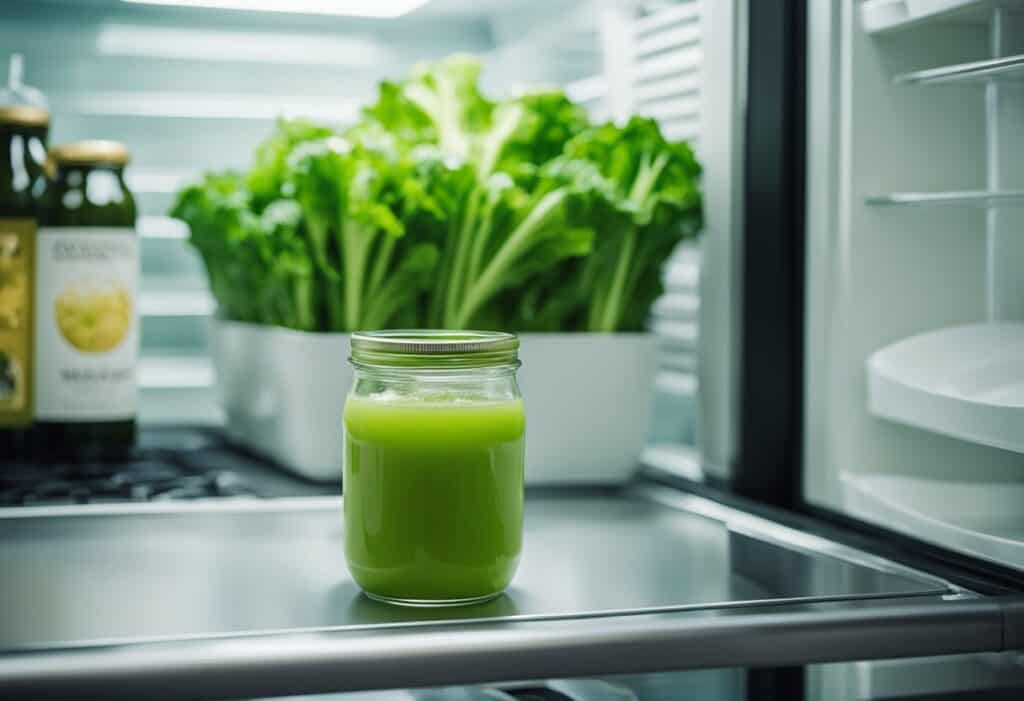
Celery juice has gained popularity in recent years as a health drink due to its various health benefits. Celery is a vegetable that is low in calories and high in fiber.
It is also rich in nutrients such as vitamins A, C, and K, as well as minerals like potassium and calcium. Celery also contains antioxidants that can help protect the body against damage from free radicals.
One of the main benefits of celery juice is its high water content, which helps to keep the body hydrated.
Drinking celery juice regularly can also help to improve digestion and reduce inflammation in the body. It may also help to lower blood pressure and improve heart health.
When it comes to storing celery juice, it is important to keep it in an airtight container in the refrigerator.
This will help to prevent the juice from oxidizing and losing its nutrients.
Celery juice can be stored in the refrigerator for up to three days, or it can be frozen for up to two months without losing any of its flavor or nutrients.
In summary, celery juice is a nutritious and healthy drink that can provide numerous health benefits. It is rich in nutrients, vitamins, minerals, and antioxidants, and has a high water content that can help to keep the body hydrated.
When storing celery juice, it is important to keep it in an airtight container in the refrigerator to preserve its nutrients.
The Science Behind Storing Celery Juice

As a nutritionist, I have researched the science behind storing celery juice to help you understand how to preserve its nutrient content and avoid oxidation.
Celery juice is a popular drink that is rich in vitamins, minerals, and antioxidants. However, it is important to store it properly to prevent nutrient loss and spoilage.
Oxidation is a chemical process that occurs when the juice is exposed to air and light, which can cause a loss of nutrients and flavor.
To prevent oxidation, it is recommended to store celery juice in an airtight container. This can be done by using a glass jar with a tight-fitting lid or a vacuum-sealed container.
By removing the air from the container, you can prevent the juice from coming into contact with oxygen, which can cause oxidation.
Light exposure can also affect the nutrient content of celery juice. When exposed to light, the juice can lose its nutritional value, as well as its flavor and color.
Therefore, it is recommended to store celery juice in a dark place, such as a pantry or refrigerator. This can help to preserve the juice’s nutrient content and flavor.
Results of studies have shown that storing celery juice in the refrigerator can help to extend its shelf life.
However, it is important to note that the juice should be consumed within 24 to 48 hours of juicing to ensure maximum nutrient content. After this time, the juice may begin to lose its nutritional value and flavor.
In conclusion, storing celery juice properly is essential to preserve its nutrient content and prevent oxidation.
By using an airtight container and storing it in a dark place, you can help to preserve the juice’s nutritional value and flavor.
It is also important to consume the juice within 24 to 48 hours of juicing to ensure maximum nutrient content.
How to Store Celery Juice
As someone who regularly drinks celery juice, I know that storing it properly is crucial to maintaining its freshness and nutritional value. Here are a few tips on how to store celery juice:
Refrigeration
The best way to store celery juice is by refrigerating it. Simply pour the juice into an airtight container, such as a glass mason jar or a glass bottle, and store it in the refrigerator for up to three days.
This will help keep the juice fresh and prevent it from spoiling.
Freezing
If you want to store celery juice for longer than three days, you can freeze it. Pour the juice into an airtight container and place it in the freezer.
Celery juice can be frozen for up to two months without losing any of its flavor or nutrients.
Room Temperature
While it’s best to refrigerate or freeze celery juice, it can be stored at room temperature for a short period of time.
If you’re taking the juice with you on the go, make sure to store it in an airtight container and consume it within a few hours.
Glass Container
When storing celery juice, it’s best to use a glass container instead of a plastic one. Glass containers are more airtight and won’t absorb any of the juice’s flavors or odors.
Airtight Containers
To keep celery juice fresh, it’s important to store it in an airtight container. This will prevent air from getting in, which can cause the juice to spoil more quickly.
If you don’t have a glass container, any airtight container will do.
Overall, storing celery juice is easy as long as you follow a few simple guidelines.
Whether you’re refrigerating, freezing, or storing at room temperature, make sure to use an airtight container and consume the juice within a few days.
Storing Celery Juice in the Freezer
If you want to store your celery juice for a longer period, freezing is a great option.
Freezing celery juice is easy, and it can last for up to two months without losing any of its flavor or nutrients. Here are some tips on how to freeze celery juice:
- Use a freezer bag or an airtight container: Before freezing, make sure to transfer your celery juice into a freezer-safe bag or an airtight container. This will prevent freezer burn and keep the juice fresh for a longer period.
- Leave some space: When storing in a freezer bag or container, make sure to leave some space at the top to allow for expansion. This will prevent the bag or container from bursting when the juice freezes and expands.
- Label and date: It’s important to label and date your freezer bag or container. This will help you keep track of when you froze the juice and when it needs to be used by.
- Use ice cube trays: Another option is to freeze the celery juice in ice cube trays. Once frozen, transfer the cubes to a freezer bag or container. This makes it easy to grab just the right amount of celery juice when you need it.
- Thawing the juice: To thaw the celery juice, simply transfer it from the freezer to the refrigerator and let it thaw overnight. Alternatively, you can place the frozen juice in a bowl of warm water to speed up the thawing process.
By following these simple steps, you can enjoy fresh celery juice for up to two months.
Freezing is a great option for those who want to batch their production or have limited time to prepare fresh celery juice every day.
Effects of Storage on Celery Juice
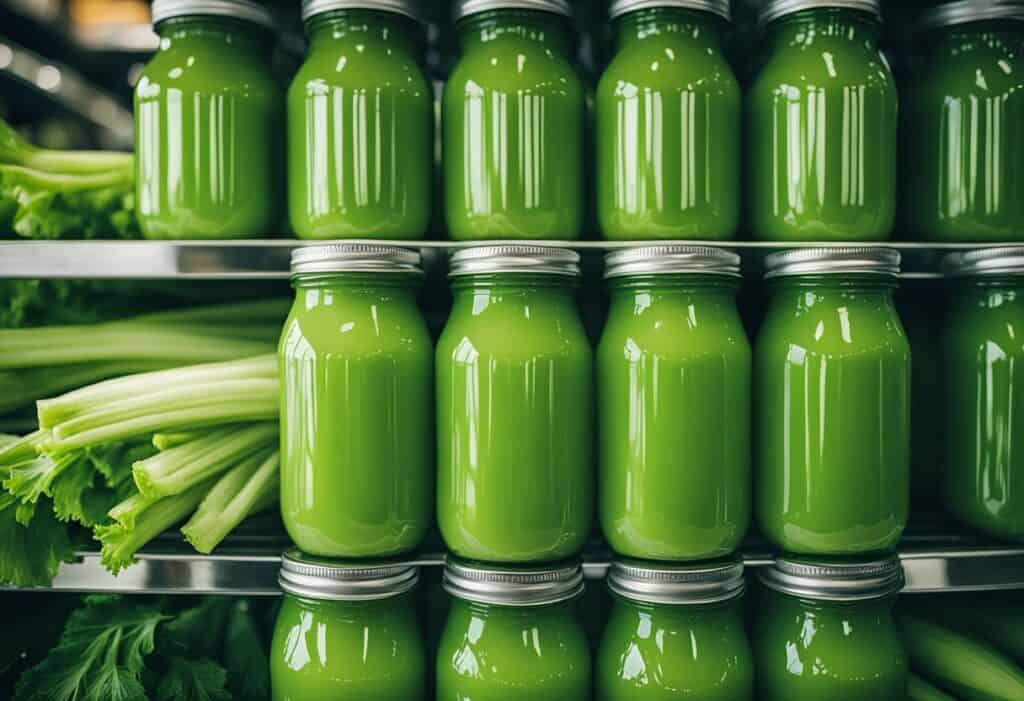
When it comes to storing celery juice, there are a few factors to consider. One of the most noticeable effects of storage is a change in color.
Celery juice that has been stored for more than 24 hours may turn a slightly darker shade of green or even yellow.
While this change in color may not be the most visually appealing, it is generally not a cause for concern.
Another effect of storage is the development of bubbles or foam on the surface of the juice. This is a natural occurrence due to the fermentation process that occurs when the juice is exposed to air.
While this may look unappetizing, it is not necessarily a sign that the juice has gone bad.
One of the most noticeable effects of storage is an off smell. Celery juice that has been stored for too long may develop a sour or musty odor.
This is a sign that the juice has started to spoil and should be discarded.
Mold is another potential issue when storing celery juice. If the juice has been stored in an unclean container or in an area with high humidity, mold may begin to grow on the surface.
This is a sign that the juice has gone bad and should be thrown out immediately.
In addition to changes in color, bubbles, off smell, and mold, storage can also affect the taste and texture of celery juice.
Over time, the juice may become less flavorful and lose its crisp, refreshing texture. It is important to consume celery juice as soon as possible after it is made to ensure maximum freshness and flavor.
Overall, while it is possible to store celery juice for a short period of time, it is best to consume it as soon as possible after it is made to ensure maximum freshness and flavor.
If you do need to store celery juice, be sure to use a clean, airtight container and store it in the refrigerator for no more than 72 hours.
Preparation Tips for Longer Shelf Life
When it comes to storing celery juice, there are a few things you can do to extend its shelf life. Here are some preparation tips that can help:
Use Fresh Celery
Using fresh celery is key to getting the most out of your celery juice. Fresh celery has a higher water content, which means you’ll get more juice out of it. Plus, fresh celery will have more nutrients than older celery.
Use a Juicer
To get the most juice out of your celery, you’ll want to use a juicer. A masticating juicer is a great option because it extracts more juice and nutrients than a centrifugal juicer.
However, if you don’t have a masticating juicer, a centrifugal juicer will still get the job done.
Add Citrus Fruit
Adding lemon, lime, or another citrus fruit to your celery juice can help extend its shelf life. The citric acid in the fruit acts as a natural preservative, which can help keep your juice fresh for longer.
Cut Your Celery
Before juicing your celery, it’s a good idea to cut it into smaller pieces. This will make it easier to juice and will help prevent your juicer from getting clogged.
Store in the Fridge
Once you’ve juiced your celery, it’s important to store it in the fridge. You can store celery juice in a sealed glass jar or an airtight container and keep it in the refrigerator for up to 24-48 hours.
Remember to shake the container before consuming the juice as separation may occur.
By following these preparation tips, you can help extend the shelf life of your celery juice and ensure that you’re getting the most out of your juice.
Health Risks of Improper Storage

As someone who has been making celery juice for a while now, I know that improper storage can lead to health risks.
Spoilage, bacterial growth, food poisoning, and unpleasant odors are all potential issues that can arise from not storing celery juice properly.
One of the main concerns with improper storage is spoilage. Celery juice can spoil quickly if it is not stored at the right temperature.
Spoiled juice can have a sour smell and taste, and it can also cause stomach issues if consumed.
Another concern is bacterial growth. Celery juice is a breeding ground for bacteria, especially if it is not stored in a clean container.
Bacteria can grow rapidly in warm temperatures, so it’s important to keep the juice refrigerated.
Food poisoning is also a risk if celery juice is not stored properly. Consuming contaminated juice can cause nausea, vomiting, and diarrhea.
This can be especially dangerous for children, the elderly, and those with weakened immune systems.
Finally, improper storage can lead to unpleasant odors. Celery juice can absorb odors from other foods in the refrigerator, so it’s important to store it in an airtight container.
To avoid these health risks, it’s important to store celery juice in the refrigerator at a temperature between 36-40°F (2-4°C).
If you’re storing celery juice for more than three days, consider freezing it. Additionally, always use clean containers and wash your hands before handling the juice to avoid bacterial contamination.
Recipes for Celery Juice
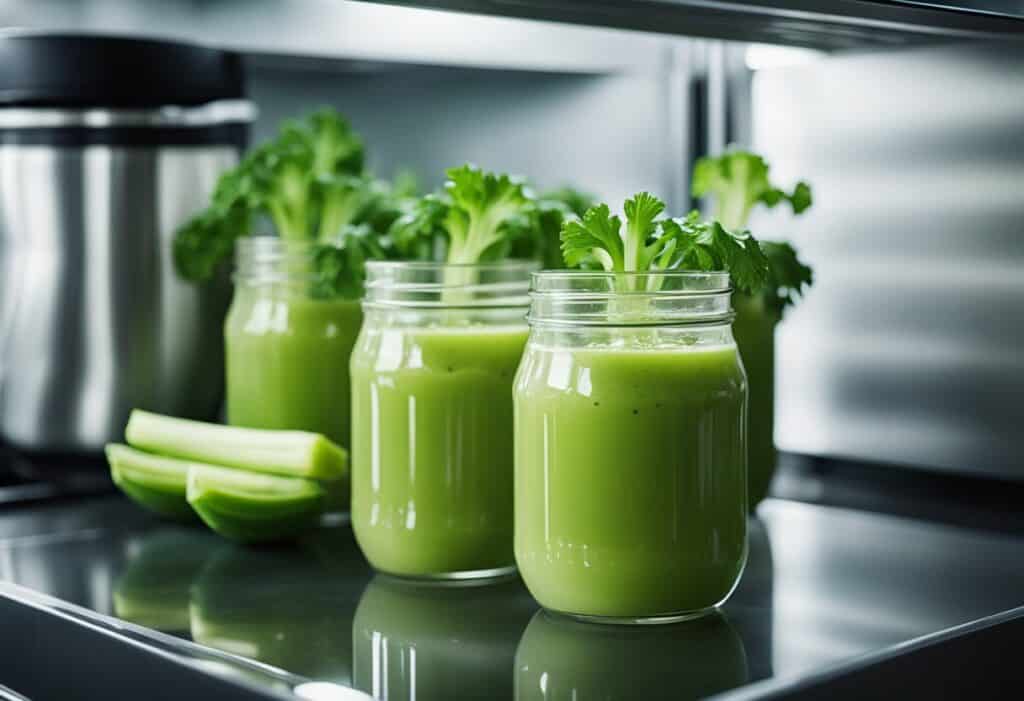
I love experimenting with new recipes for celery juice. Celery juice is a refreshing and healthy drink that can be enjoyed at any time of the day. Here are some of my favorite recipes for celery juice:
1. Fresh Celery Juice
The simplest recipe for celery juice is to juice fresh celery stalks. All you need is a juicer and fresh celery stalks.
Simply wash the celery, cut off the ends, and juice the stalks. Fresh celery juice is a great way to start your day and is packed with nutrients.
2. Celery and Apple Juice
If you want to add a little sweetness to your celery juice, try adding some apples. Apples are a great source of vitamins and minerals and add a delicious flavor to celery juice.
Simply juice the celery and apples together and enjoy.
3. Celery and Pineapple Juice
Pineapple is another great fruit to add to celery juice. Pineapple is high in vitamin C and adds a tropical flavor to the juice. Simply juice the celery and pineapple together and enjoy.
4. Celery Smoothie
If you prefer a thicker drink, try making a celery smoothie. Blend fresh celery with your favorite fruits and veggies, such as spinach, kale, or bananas, and enjoy.
You can also add some almond milk or yogurt for a creamier texture.
5. Celery Paste
If you don’t have a juicer or blender, you can still enjoy the benefits of celery juice by making a celery paste.
Simply chop fresh celery into small pieces and blend in a food processor until it becomes a paste. You can add the paste to your favorite recipes, such as soups, stews, or marinades.
These are just a few examples of the many ways you can enjoy celery juice. Experiment with different fruits and veggies to find your perfect recipe.
Related posts:
Frequently Asked Questions
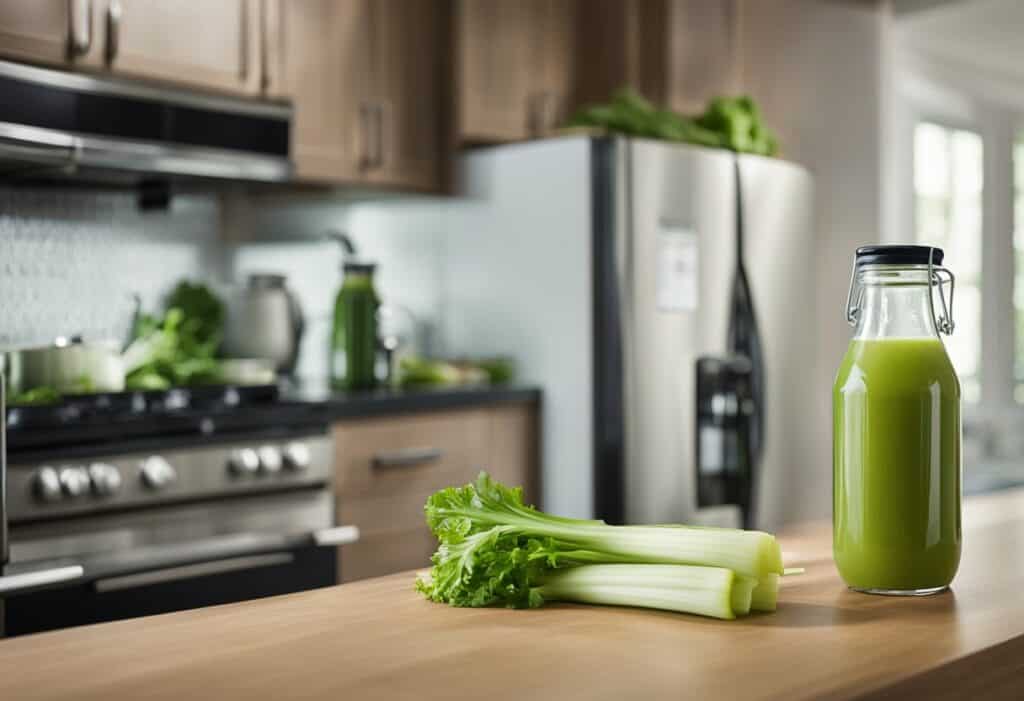
How long does fresh celery juice last in the fridge?
Fresh celery juice can last up to 72 hours in the fridge. However, it’s best to consume it as soon as possible after juicing to get the maximum benefits.
Can you freeze celery juice?
Yes, you can freeze celery juice. It can last up to 6 months in the freezer. Make sure to store it in an airtight container to prevent freezer burn.
How long does celery juice last in the freezer?
Celery juice can last up to 6 months in the freezer. However, it’s important to note that the longer it stays in the freezer, the more it loses its taste and nutrients.
Does celery juice lose nutrients when refrigerated?
Yes, celery juice can lose some of its nutrients when refrigerated. It’s best to consume it as soon as possible after juicing to get the maximum benefits.
How much celery juice should I drink a day?
It’s recommended to drink at least 16 ounces of celery juice per day to get the full benefits. However, it’s important to consult with a healthcare professional before making any significant changes to your diet.
Can you juice celery juice in advance?
It’s best to drink celery juice immediately after juicing. However, if you need to make it in advance, store it in an airtight container in the fridge and consume it within 24 hours.
Remember to always use organic celery to avoid harmful chemicals.


